
U.S. President Donald Trump has decided to keep U.S. troops in Syria, the White House announced, an apparent win for military commanders who warned against drawing down the American presence while pockets of Islamic State fighters still remain in the country.
“The military mission to eradicate ISIS in Syria is coming to a rapid end, with ISIS being almost completely destroyed. The United States and our partners remain committed to eliminating the small ISIS presence in Syria that our forces have not already eradicated,” the White House said in a statement on Wednesday, April 4.
“We will continue to consult with our allies and friends regarding future plans. We expect countries in the region and beyond, plus the United Nations, to work toward peace and ensure that ISIS never re-emerges.”
The statement comes after days of Trump signaling he would pull thousands of U.S. troops out of Syria. He said Tuesday that he wanted to get American forces out of the country, following comments last week when he vowed U.S. forces would “very soon” quit Syria, a position at odds with his top officials, who have stressed the need for a long-term presence.
Trump likely doesn’t want the U.S. to pay what will likely be the immense costs of rebuilding Syrian infrastructure destroyed by Coalition airstrikes. According to the Associated Press, Trump told officials in a national security meeting on Tuesday that U.S. troops can be involved in training local forces for stabilization, but he wants wealthy Arab states in the region to pay for reconstruction.
“Let the other people take care of it now, very soon. Very soon, we’re coming out. We’ll have 100 percent of the caliphate as they call it, sometimes referred to as land, we are taking it all back quickly, quickly,” Trump said last week.
Reuters earlier reported a senior administration official as saying that Trump didn’t approve a specific withdrawal plan but was unwilling to back a long-term commitment.
General Joseph Votel, who leads the military’s Central Command, suggested on Tuesday that the U.S. should play a long-term role in Syria in terms of stabilizing the areas freed from Islamic State occupation.
“The hard part I think is in front of us and that is stabilizing these areas, consolidating our gains, getting people back into their homes, addressing the long term issues of reconstruction and other things that will have to be done,” Votel said at a U.S. Institute of Peace conference. “Of course there is a military role in this, certainly in the stabilization phase.”
U.S. forces first launched airstrikes against Islamic State in Syria and Iraq in 2014, and there are currently an estimated 2,000 U.S. troops officially deployed in Syria.
A U.S. soldier, Master Sergent Johnathan J. Dunbar, and a U.K. soldier, Sergeant Matt Tonroe, were killed in Manbij on March 30 when an improved explosive device detonated near their patrol. Both Dunbar and Tonroe were likely members of a special operations forces regiment.
Coalition forces are officially working through proxies on the ground, mostly the Syrian Democratic Forces. U.S. officials have repeatedly said the SDF has been the most effective partner against ISIS, but the actions of its component People’s Protection Units (YPG) have angered America’s NATO ally Turkey.
The SDF and YPG have largely given control over captured areas to civil administrative groups, many of which now govern parts of northern autonomously, outside the control of Bashar al-Assad’s regime.
“The SDF is still an airplane that is being built in mid-flight. The incomplete part of the SDF is the governance and administration branch, which is required to stabilize the areas of Syria that have been captured from ISIS,” Nicholas Heras, Middle East Security Fellow at the Center for a New American Security, told The Defense Post.
“If the United States was to withdraw its forces from Syria before the SDF’s governance and administration branches are up to the job of governing in the wake of ISIS, then there is a grave risk that ISIS would return and reconquer the areas of northern and eastern Syria that have been taken from it.”
Brett McGurk, the U.S. envoy to the counter-ISIS Coalition, said on Tuesday that ISIS still maintains a presence in Syria around Shaddadi and Bukamal near the Iraqi border. A planned SDF-dominated Syrian Border Security Force, first reported by The Defense Post in January, was squashed shortly after Turkey threatened to attack the Kurdish enclave of Efrin in Syria’s Aleppo governorate.
“This fact is important to consider when delving into the ongoing debate within the U.S. government over what to do with the U.S. military presence in Syria. President Trump said that he would withdraw U.S. troops once ISIS was one hundred percent beaten. What is at the heart of the debate within the U.S. government, and what is very important for President Trump’s decision-making, is how to define that ISIS is one hundred percent beaten,” Heras said.
What the Pentagon has that Trump lacks is a comprehensive definition of when ISIS is totally defeated – meaning when the remaining areas it controls in Syria are recaptured and an authority, “ideally the IDF,” with the ability to provide security, governance and administration replaces it, he explained.
“Effectively, the U.S. military argues that the SDF needs to transition from a counter-ISIS military force to a governing authority that can conduct preventative counterterrorism by governing and administering post-ISIS areas effectively. But the SDF can’t ride the bike yet, it still needs training wheels, and the U.S. military doesn’t want to leave until the training wheels can come off.”
Manbij
The move also comes as the SDF prepares for a possible fight against Turkey-backed fighters in Manbij. Despite the U.S. backtracking on its Syrian Border Security Force Plan, Turkish President Recep Tayyip Erdogan did launch an attack on Efrin on January 20, and has signaled that his next target may be Manbij.
On Friday, spokesperson Kino Gabriel told Reuters that the SDF had not been informed of any plan to withdraw U.S. forces operating in Syria.
“Our work and coordination (with the coalition) is continuing in the framework of the support program and joint operations in all regions,” Gabriel said.
Referring to Trump’s statement, Gabriel said it “was not clear,” adding “statements that came from other American officials in the American administration did not confirm that or deny it.”
The Coalition-backed SDF recaptured majority-Arab Manbij from ISIS in August 2016. Control of Manbij was handed to the SDF-aligned Manbij Military Council that month.
The mainly Kurdish People’s Protection Units (YPG) makes up the backbone of the SDF, but Turkey sees the group as terrorists inextricably linked to the outlawed Turkish Kurdistan Workers’ Party (PKK).
Ankara has been long calling for the People’s Protection Units (YPG) to withdraw east of the Euphrates river in Syria. Turkey has also threatened to push its troops to Manbij, despite the U.S. forces presence in the area.
The mainly Kurdish YPG makes up the backbone of the SDF, but Turkey sees the group as terrorists inextricably linked to the outlawed Turkish Kurdistan Workers’ Party (PKK).
U.S. forces were deployed in the Manbij area in March 2017 to reassure the SDF and deter hostilities between factions on the ground, but since then Turkey-backed FSA fighters have often fired at MMC forces near the frontline.
McGurk said on Tuesday that an SDF withdrawal would not resolve the “incredibly complex” situation in the Manbij area.
The envoy explained that many of the opposition groups outside of Manbij have a “more Islamist orientation, where in Manbij right now some women are covered, some are not. It is a much more, for lack of better word, secular environment.”
“That’s a very deep ideological divide. That makes the problem harder than just ‘hey, we got to get the Kurds over the river and everything will be fine.’ We have to work through this diplomatically with our NATO allies and Turks,” McGurk said.
France
French troops could replace U.S. forces if Trump decides to pull out or scale back the American presence in Syria.
Last week, representatives of the Democratic Federation of Northern Syria, the SDF and the Women’s Protection Units (YPJ) met French President Emmanuel Macron in Paris. At a press conference after the meeting on Thursday, the delegates said that France would “reinforce” it’s military presence in the Manbij area in order to prevent a Turkey-led attack on the SDF.
However, Macron’s office said on Friday that France is not planning a new military operation in northern Syria “outside the international coalition” against ISIS.
The White House said Trump and Macron spoke on Wednesday about “their commitment to ensure the total defeat of ISIS.”
Over recent days, there have been a number of unconfirmed reports that French troops were seen in Tal Abyad, a town bordering Turkey that President Recep Tayyip Erdogan on March 19 threatened to include in an expanded Turkish military operation in northern Syria.
Kurdistan 24 reported on Tuesday that U.S. and French troops are already operating on the ground in Manbij and Raqqa, and in other locations in northern Syria.
“Sometimes the NATO states deny the existence of their forces in the region to avoid any tension, but, actually, French and U.S. troops are operating on the ground in our region,” the Co-Chair of the Defense and Self-Protection Body in Cizire canton Rezan Gilo said.


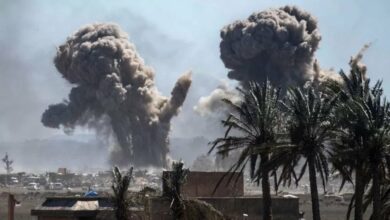
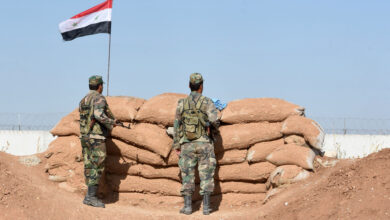
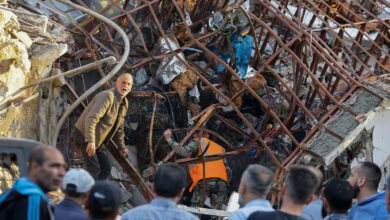
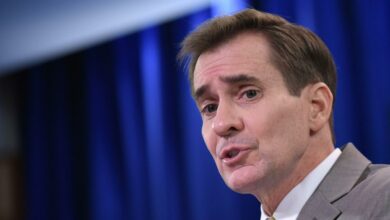
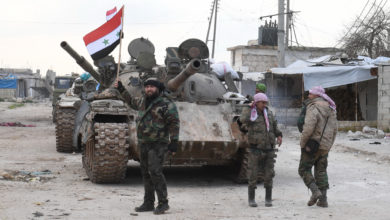

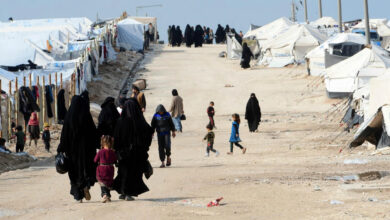
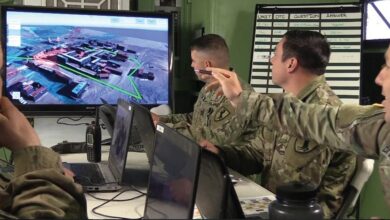
5 Comments